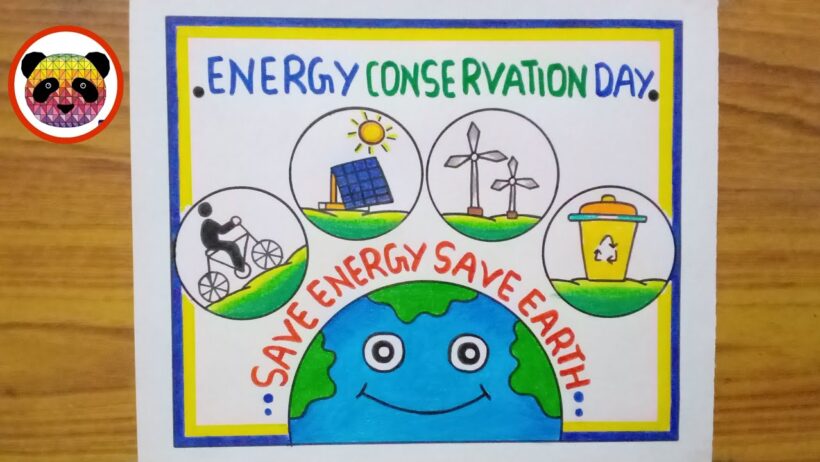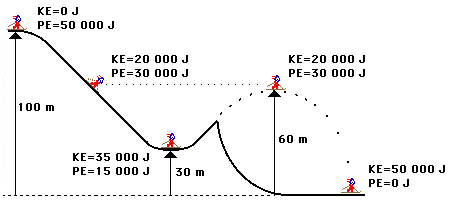Drawing is not merely an artistic expression; it serves as a powerful and evocative medium for communicating critical messages about urgent global issues such as energy conservation. The essence of energy conservation lies not just in saving resources, but in cultivating a mindset that fosters sustainability and respect for our environment. In this discourse, we will explore creative ideas on how to impart the significance of energy conservation through art.
As we embark on this journey, envision the concept of energy conservation as a tapestry woven from the threads of responsibility, innovation, and sensuality. Drawing can transform these threads into striking imagery that resonates with viewers, urging them to reflect on their own consumption habits.
The first step in this artistic endeavor is to immerse oneself in research. Understand the myriad facets of energy conservation. Awareness of renewable energy sources, such as solar, wind, and hydropower, is imperative. These elements can serve as powerful symbols in your artwork. Imagine depicting a sun bursting with vibrant hues, channeling rays of hope through the clouds, or illustrating a wind turbine gracefully spinning against a backdrop of rolling hills. These motifs can evoke the harmony between technology and nature, highlighting the potential for a sustainable future.
Next, consider the use of metaphorical imagery. Envision energy as a river, flowing through the landscape of our lives. In your drawing, create tributaries that represent the different means of energy consumption: the excesses of fossil fuels, renewable energy streams, and innovative technologies. The river can be teeming with life, signifying the interconnectedness of all beings and their reliance on energy resources. Depict areas where the flow slows, silted by pollution, representing how irresponsible consumption can choke off vitality, illustrating the delicate balance we must maintain.
When sketching scenes of daily life, integrate scenes that underscore simplicity and minimalism, which resonate with the ethos of energy conservation. A family huddled around a renewable energy source, such as solar panels or an electric vehicle charging station, can serve as a visual narrative of community involvement. A powerful image could comprise a child planting a sapling, clutching a globe in one hand and a lightbulb in the other, symbolizing the hope for a sustainable future powered by young, conscious consumers.
In terms of color palette, employ hues that are synonymous with earth and sustainability. Greens can evoke tranquility and growth, while blues resonate with clarity and serenity. Incorporate warm tones to signify energy emanating from renewable sources, contrasting with cooler shades that convey the stark reality of outdated practices focused solely on consumption. Explore the emotional connotations of color theory, juxtaposing the beauty of a sunlit forest with the harshness of an urban landscape shrouded in smog.
Add layers to your artwork by incorporating texture. Use mixed media such as collages to demonstrate the connection between nature and human innovation. Pieces of recycled materials can build a three-dimensional energy source, reinforcing the idea that sustainability is tangible and attainable. This approach can also beckon the audience to become part of the solution, prompting them to rethink their contributions to energy conservation.
Another creative idea is to express energy conservation through storytelling. A sequential art style, such as a comic strip, can narrate the life of a household that undergoes a transformation as it embraces conservation tactics. Illustrate the family’s journey: perhaps they start by segregating waste, followed by adopting energy-efficient appliances, and ultimately celebrating their drop in energy consumption. Storytelling not only captures the imagination but also serves as an educational tool that can ignite inspiration in others.
Public engagement through community drawing events offers a unique opportunity to foster collective awareness. Set up workshops where individuals can gather to express their visions of energy conservation and create collaborative murals. Such initiatives harness the power of communal creativity. When people collectively paint a mural depicting a world thriving on renewable energy, it serves as a public ally, beckoning others to engage deeply with the theme of sustainability.
Moreover, utilize digital platforms for wider dissemination of your drawings. Social media is an excellent medium to share artwork and messages about energy conservation, reaching a broader audience. By juxtaposing photographs of everyday energy wastage against your thought-provoking visuals, you create jarring contrasts that incite curiosity and, ideally, actionable change. Encourage followers to share their own interpretations of energy conservation, creating a ripple effect of creativity and awareness.
To culminate this exploration, remember that the art of drawing energy conservation is far more than simple illustration; it is a narrative of hope wrapped in the urgency of action. It encapsulates a call to arms, inviting viewers to join a collective effort that is not just a choice, but an obligation to our planet and future generations. As every stroke communicates meaning, let your artwork reflect the ethos of sustainability and inspire change within communities, foster discussions around responsible consumption, and embody an anthem of environmental stewardship.
In concluding, drawing as a medium for energy conservation awareness can incentivize individuals to reconsider their roles within the ecosystem. By transforming abstract concepts into visual narratives, we can cultivate a deeper understanding of energy conservation’s importance and spur others into action. Let each drawing serve as a guide, illuminating pathways toward a nurturing coexistence with our planet.








